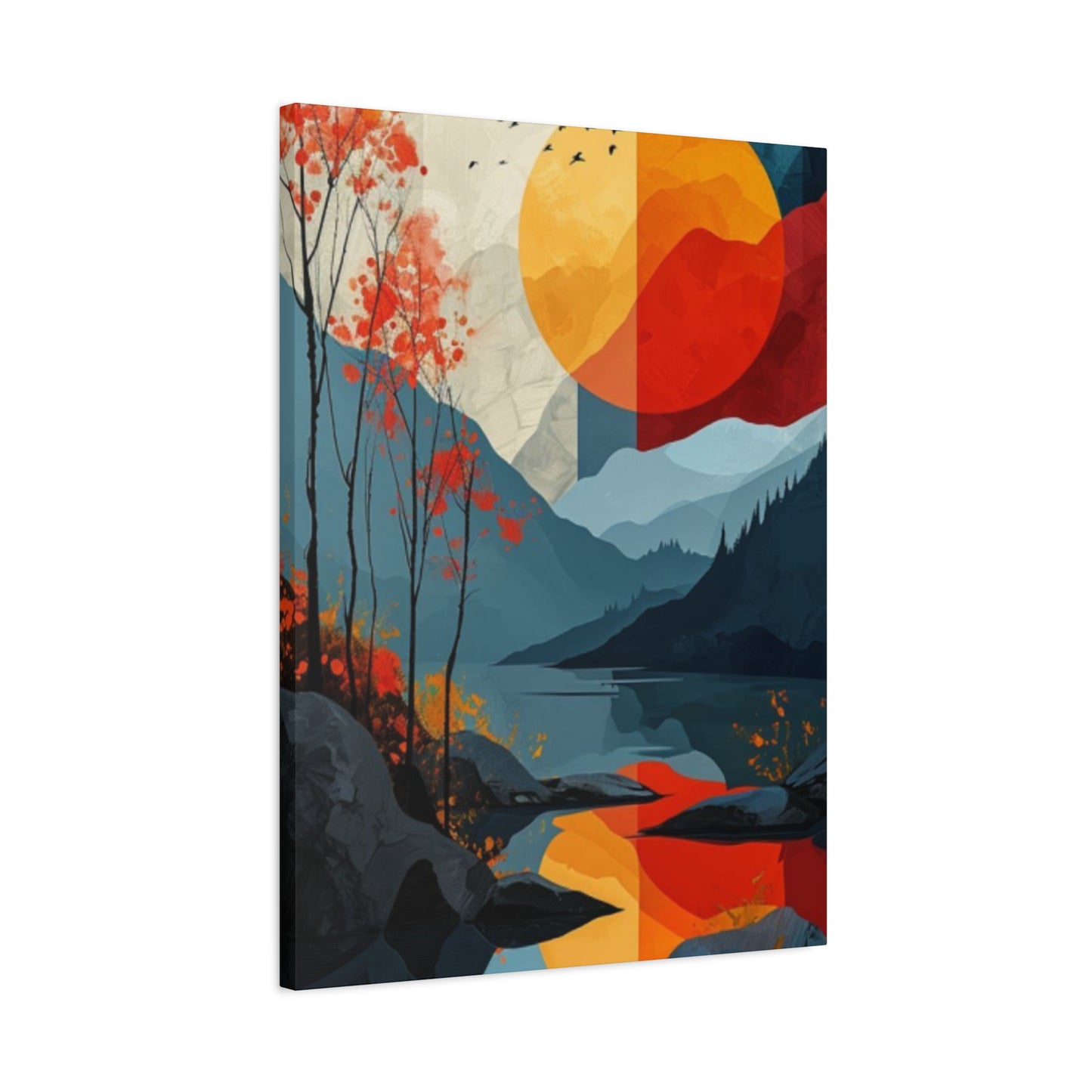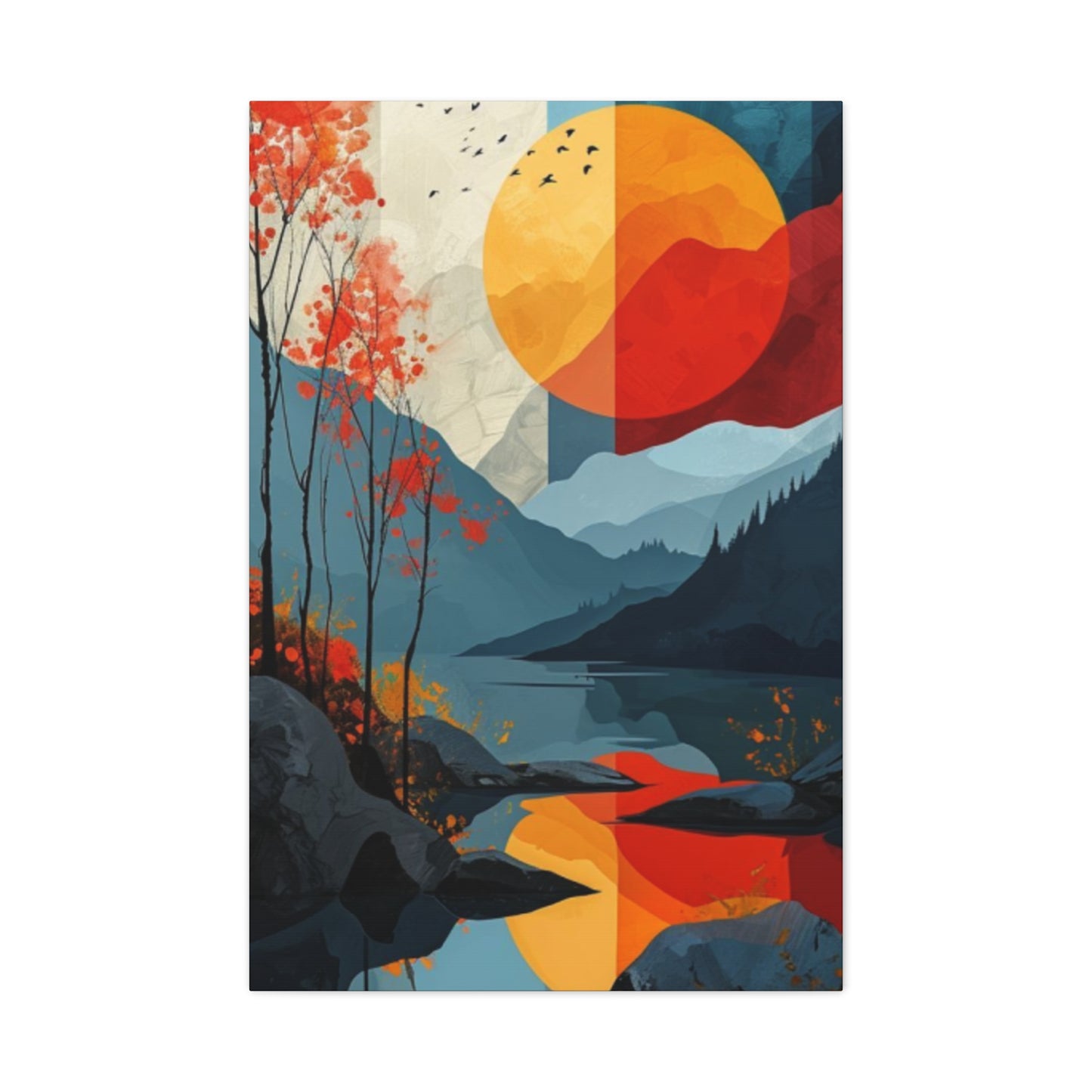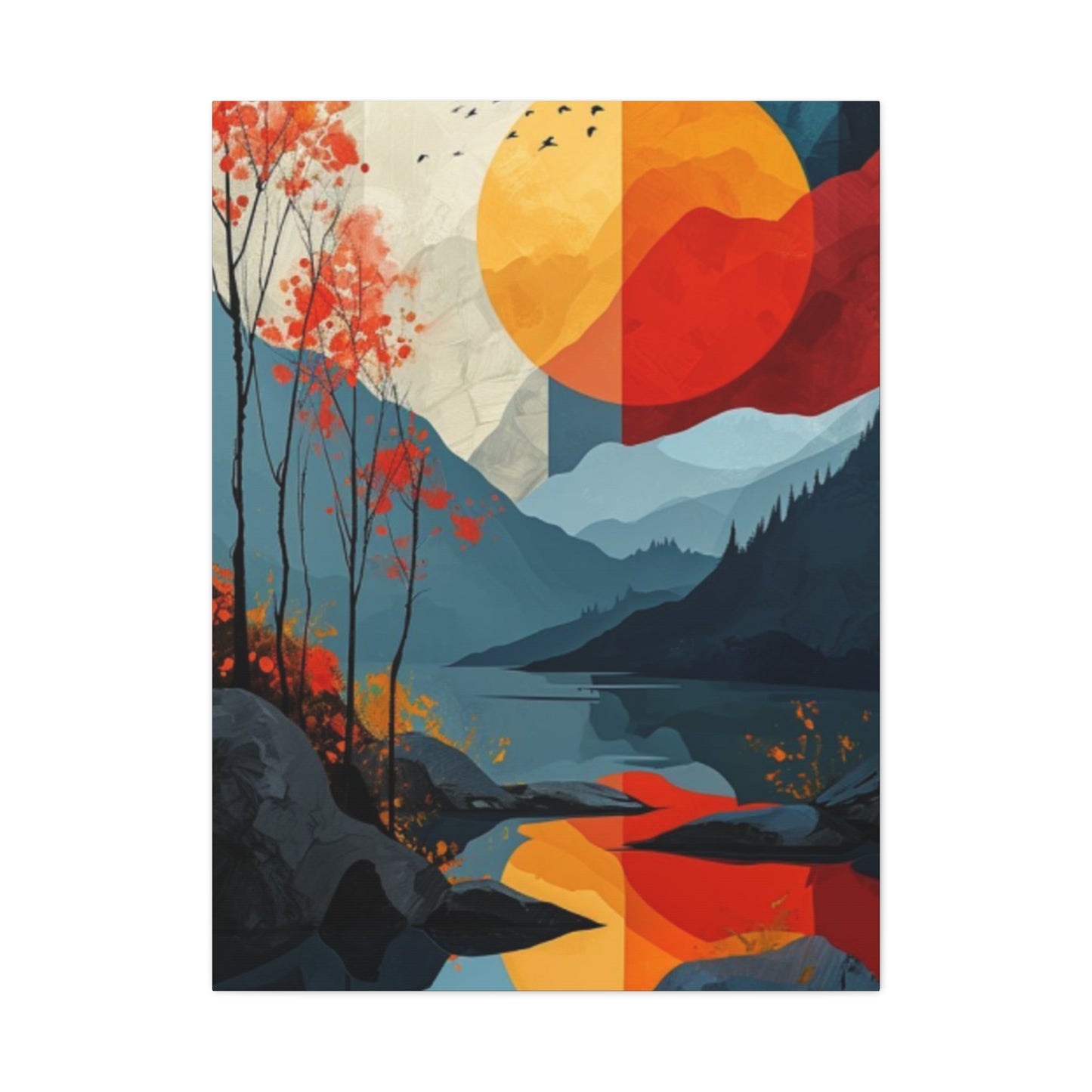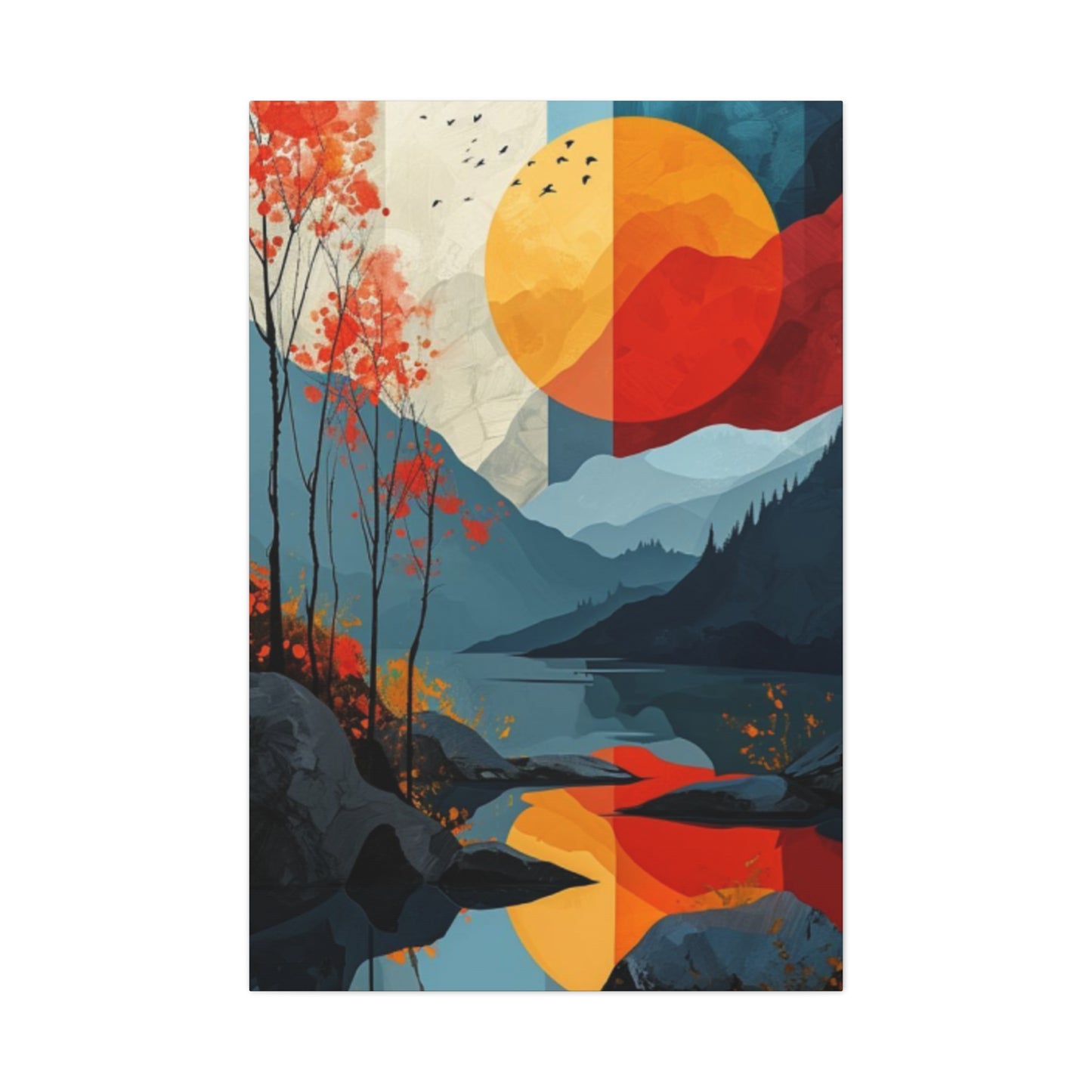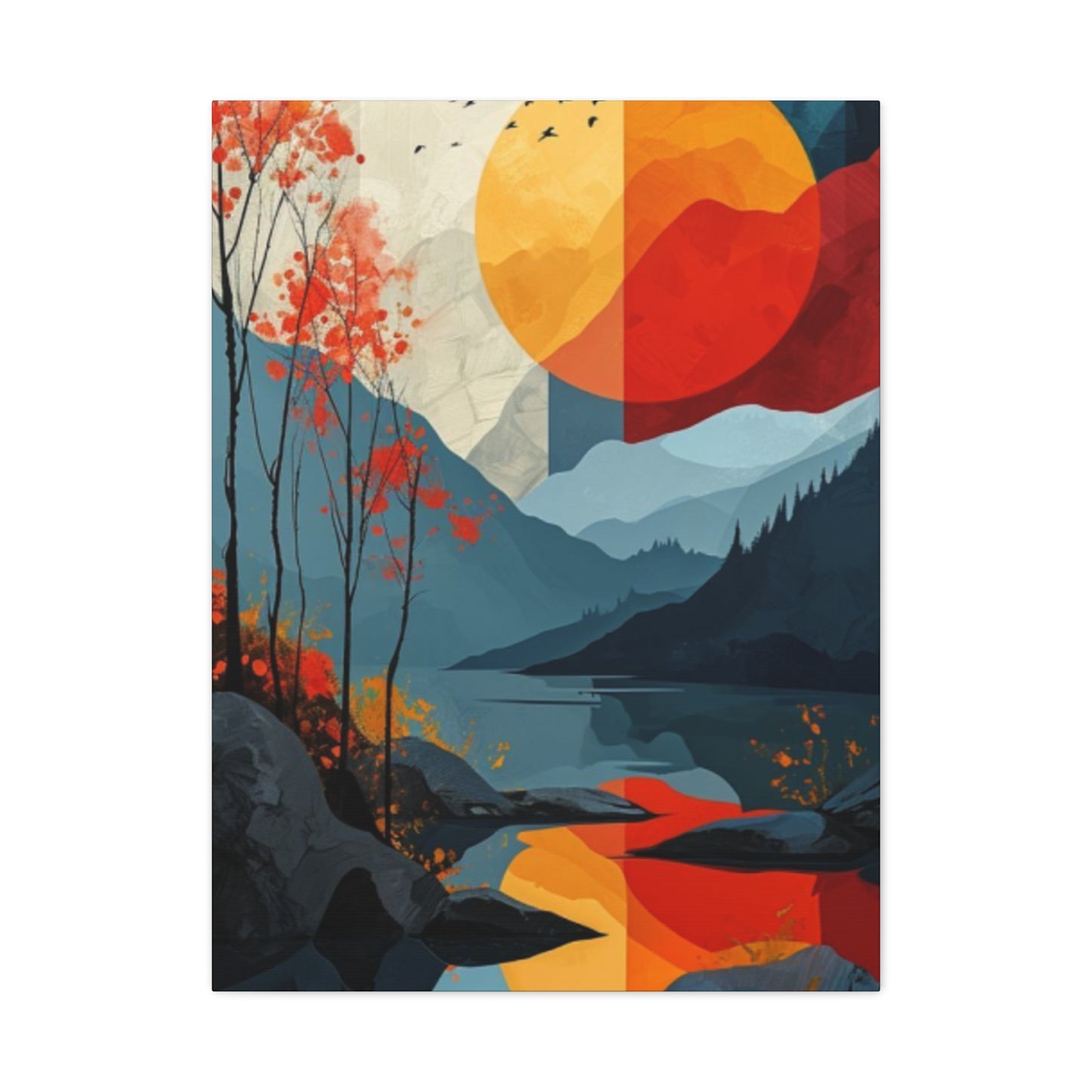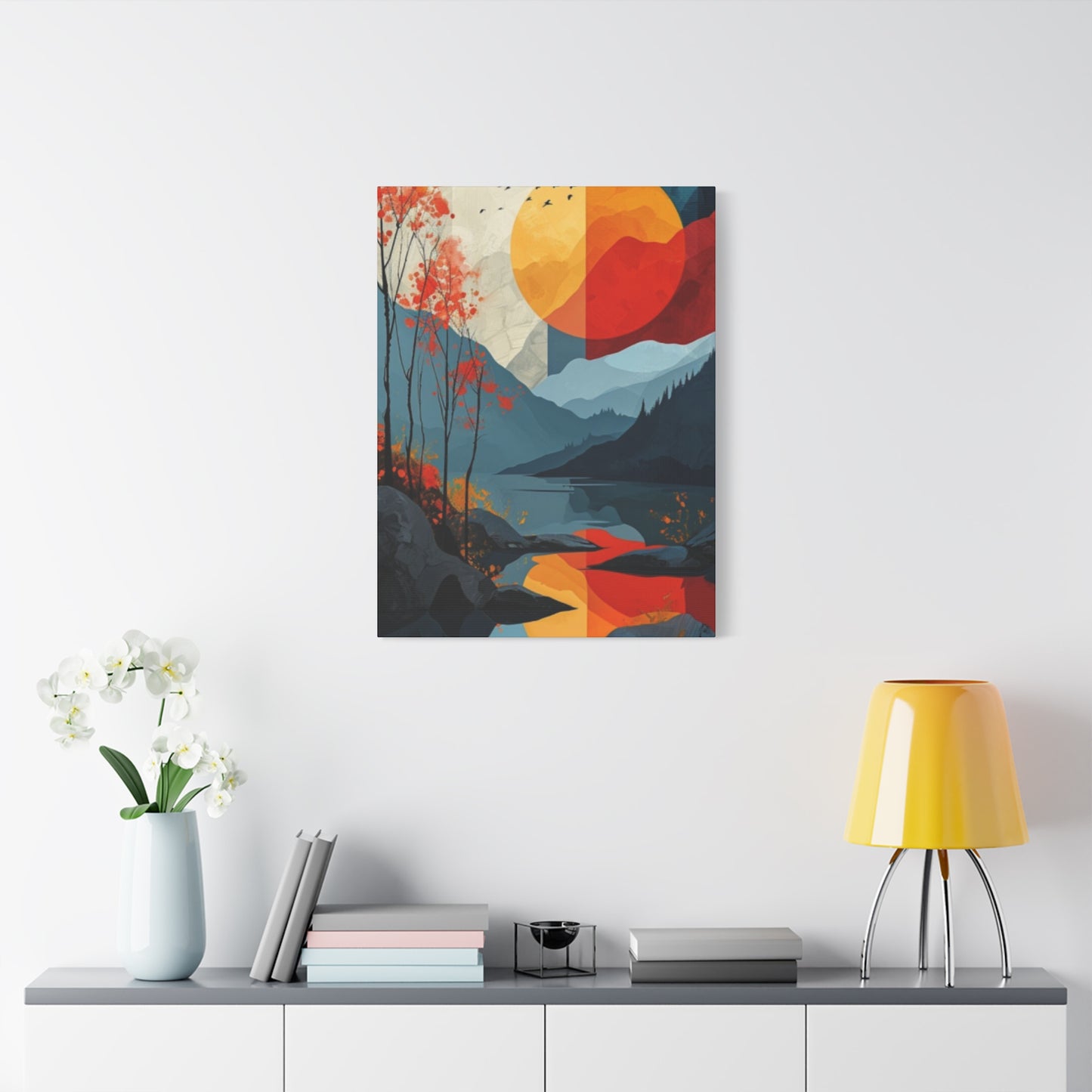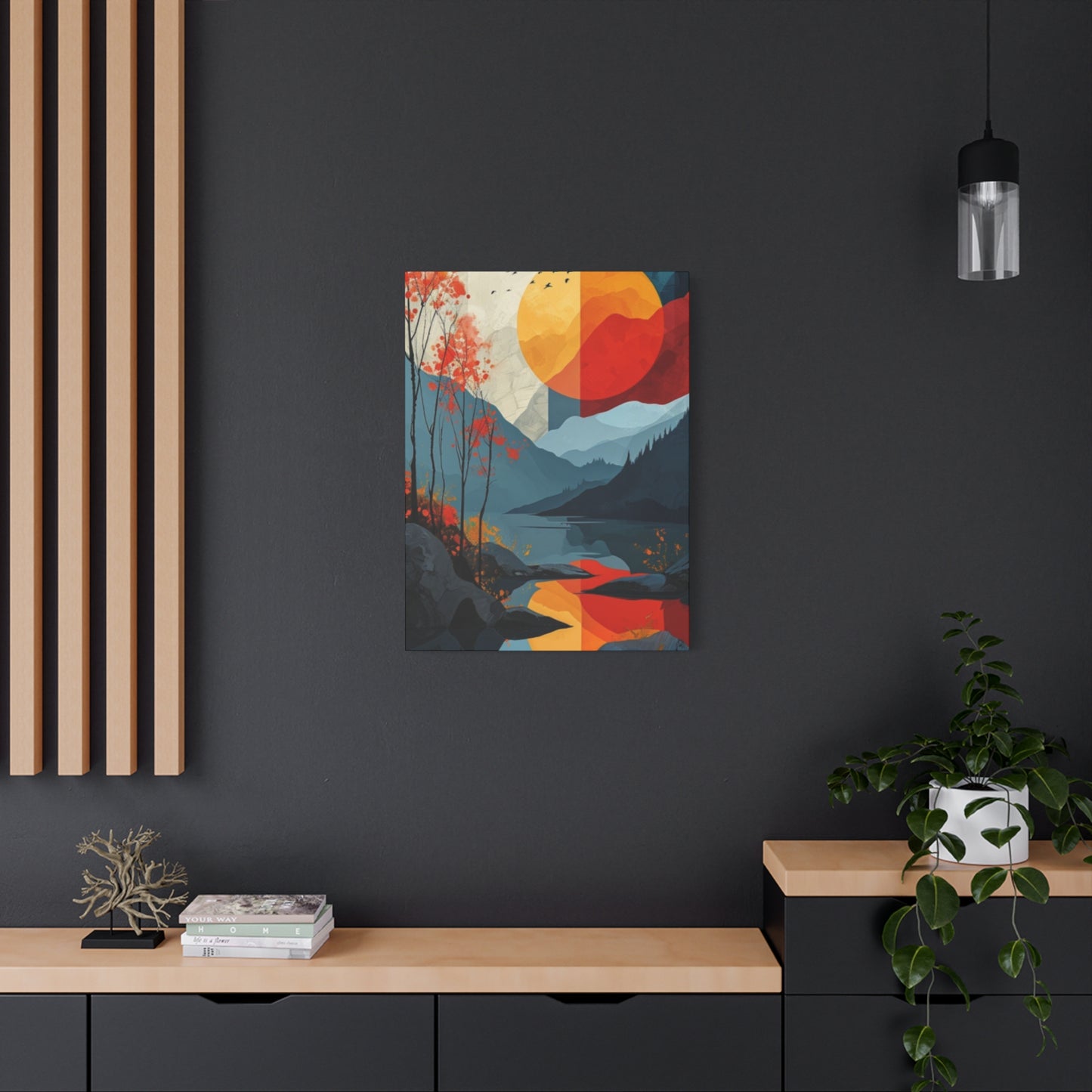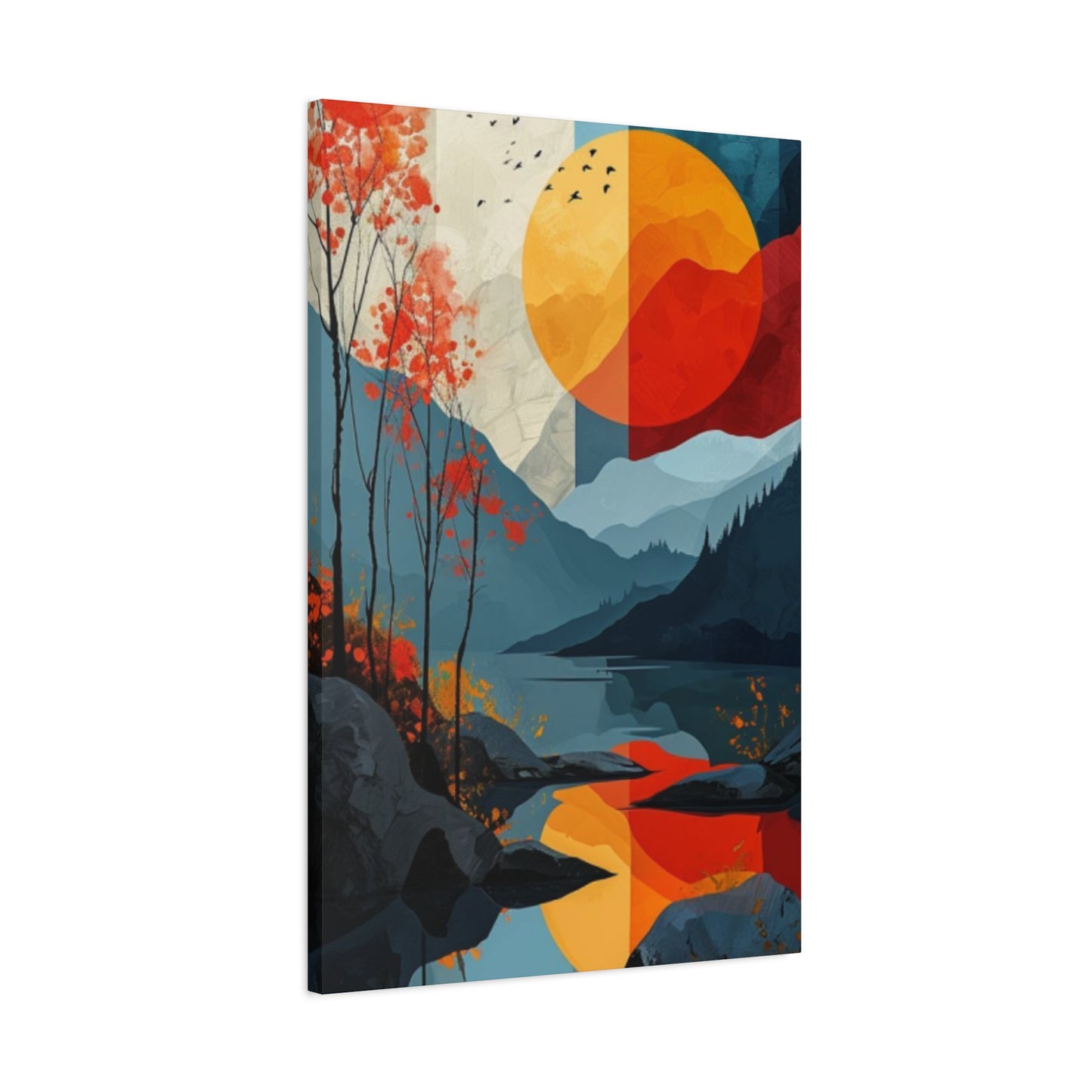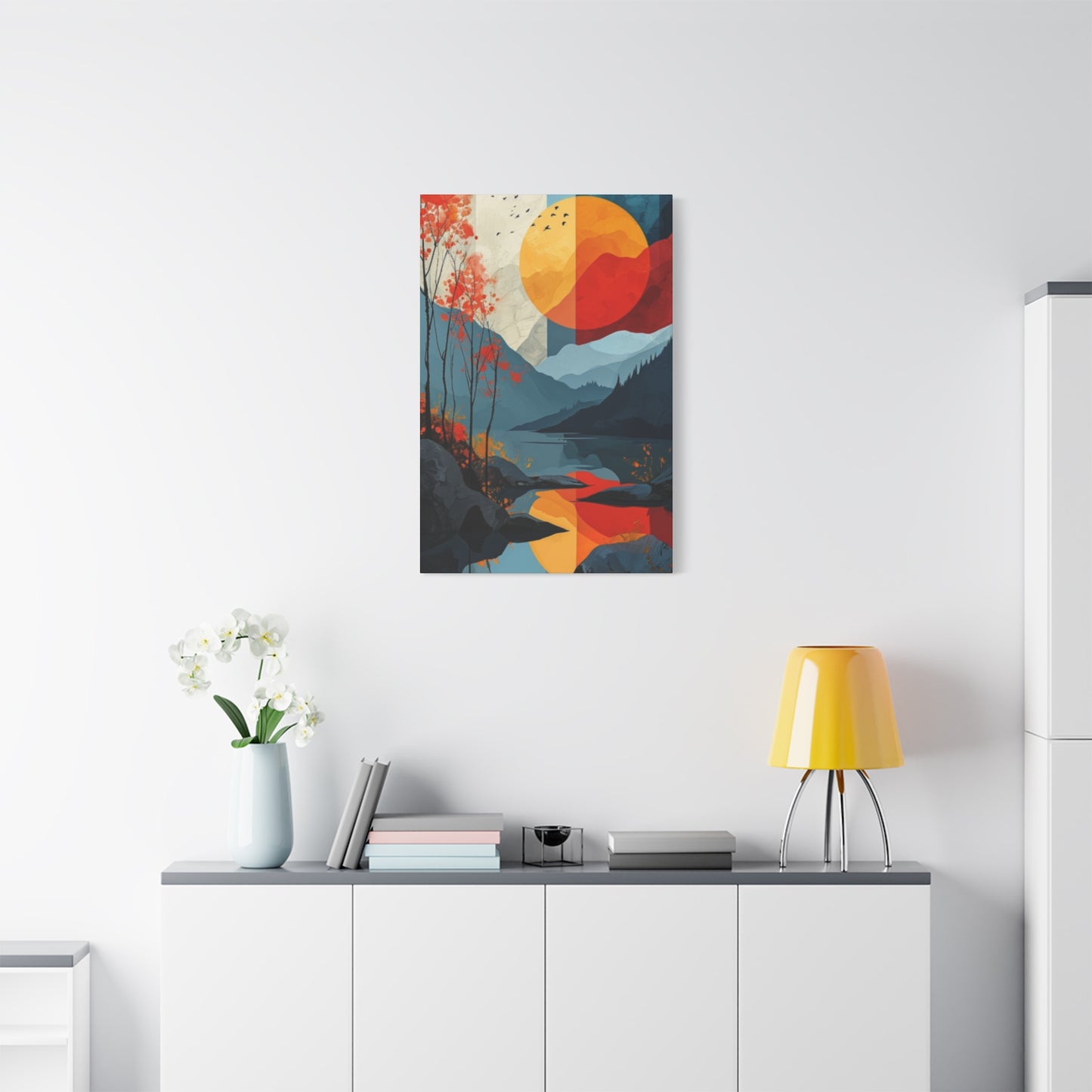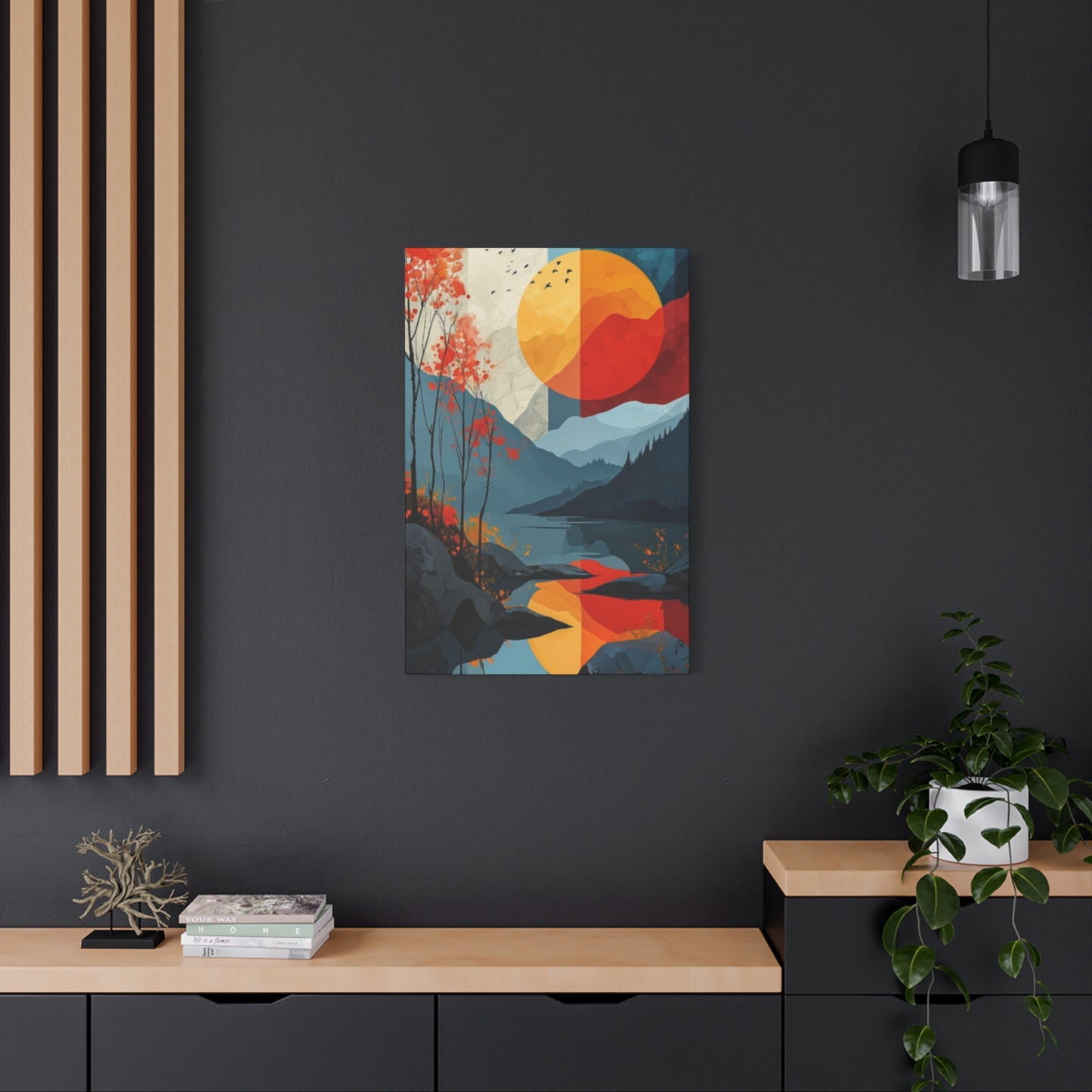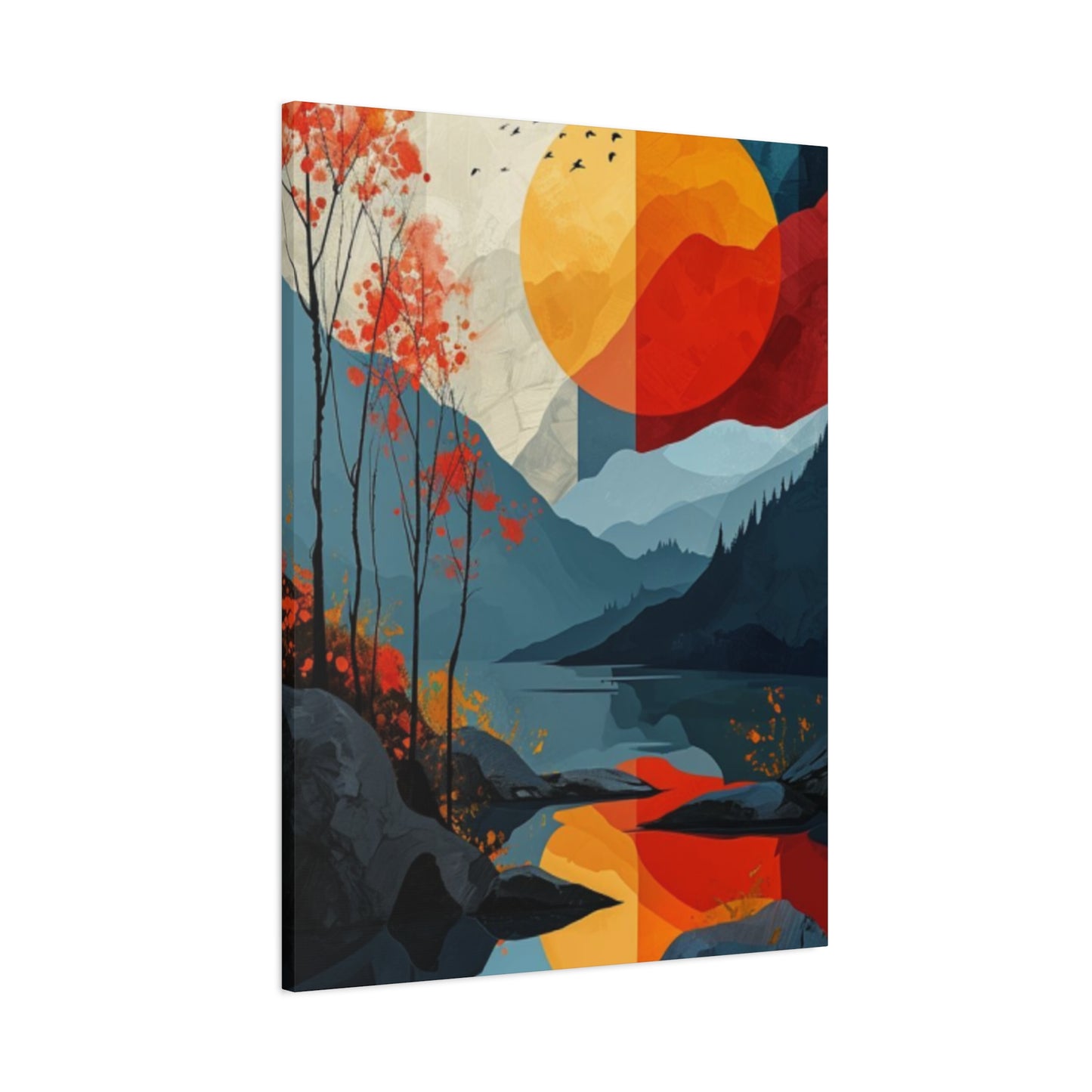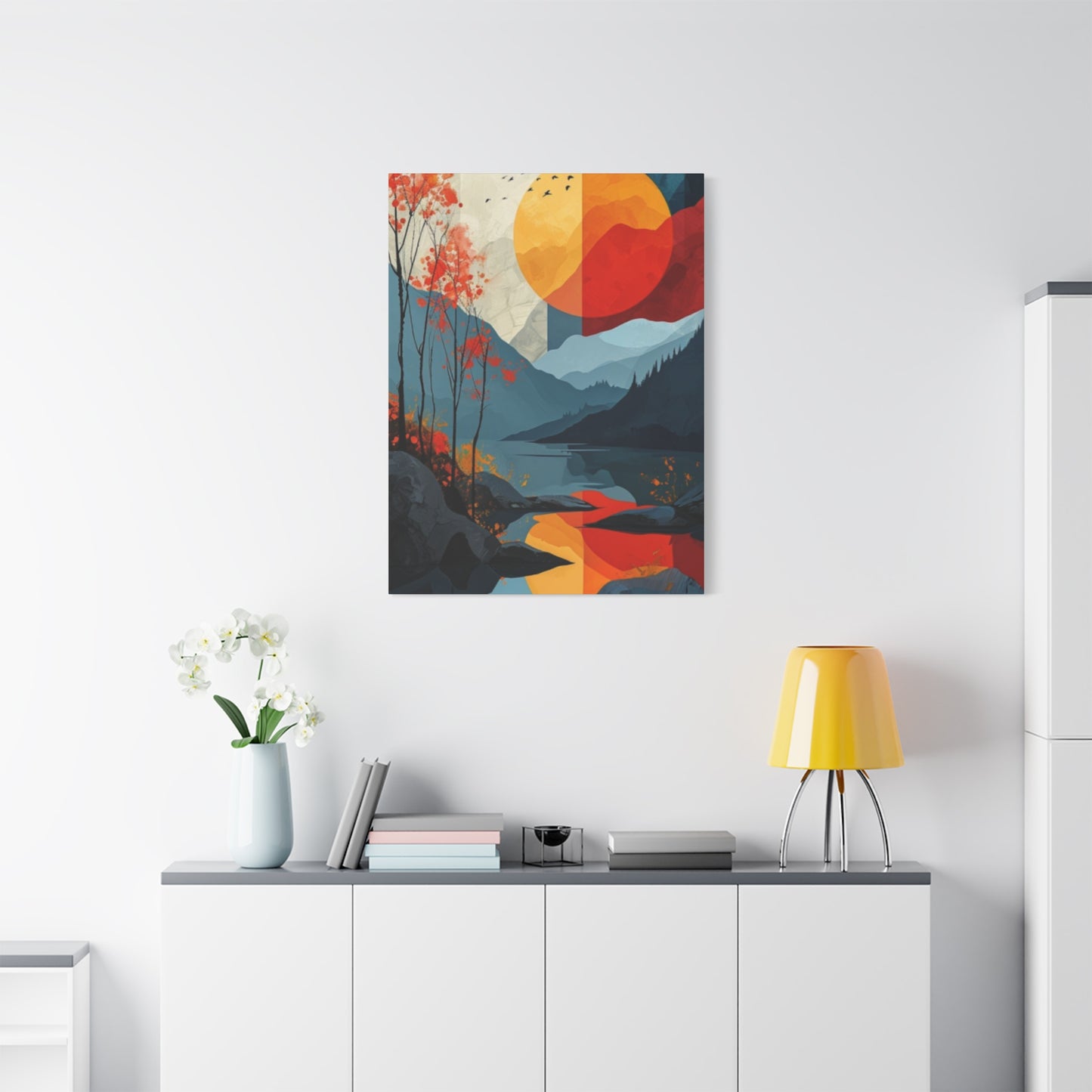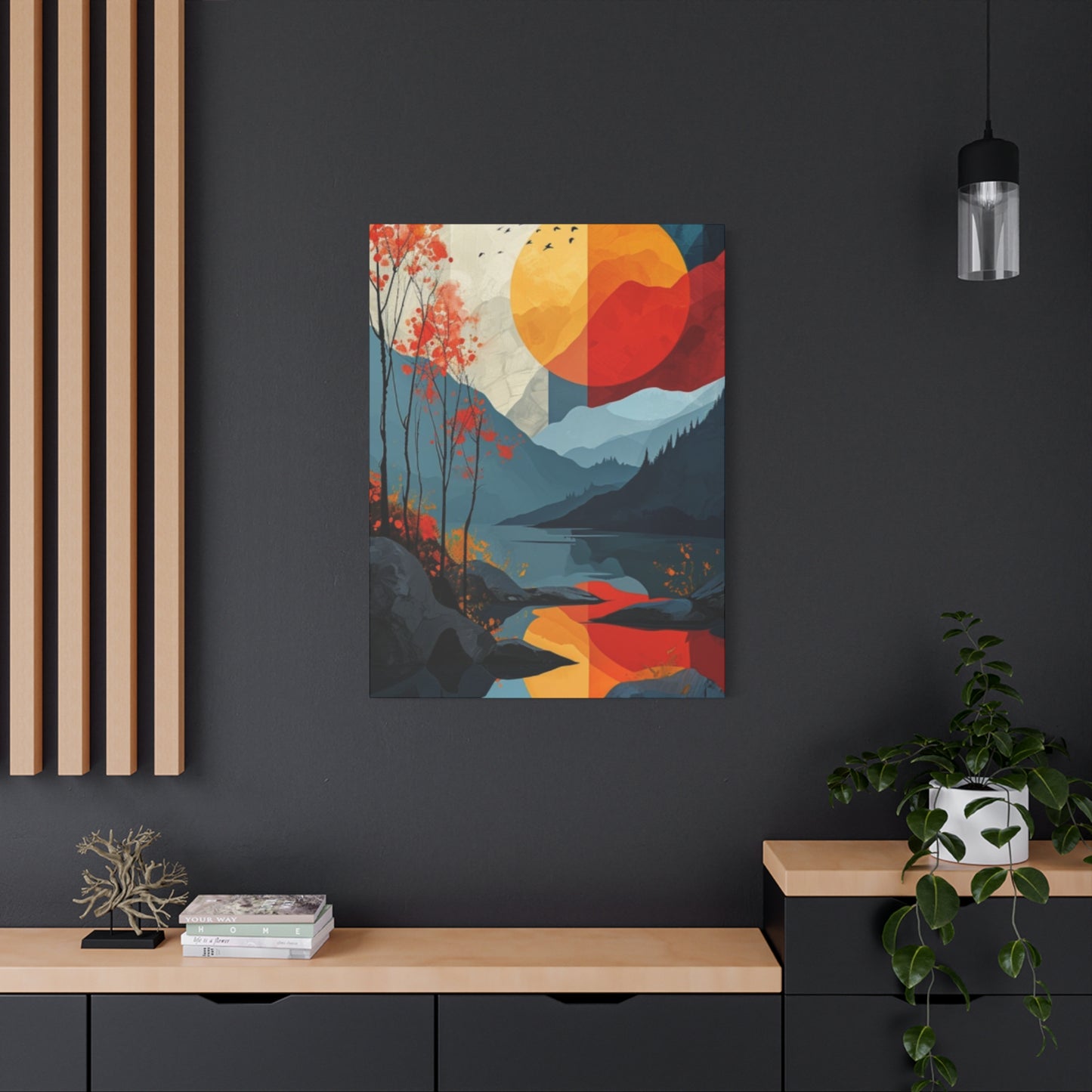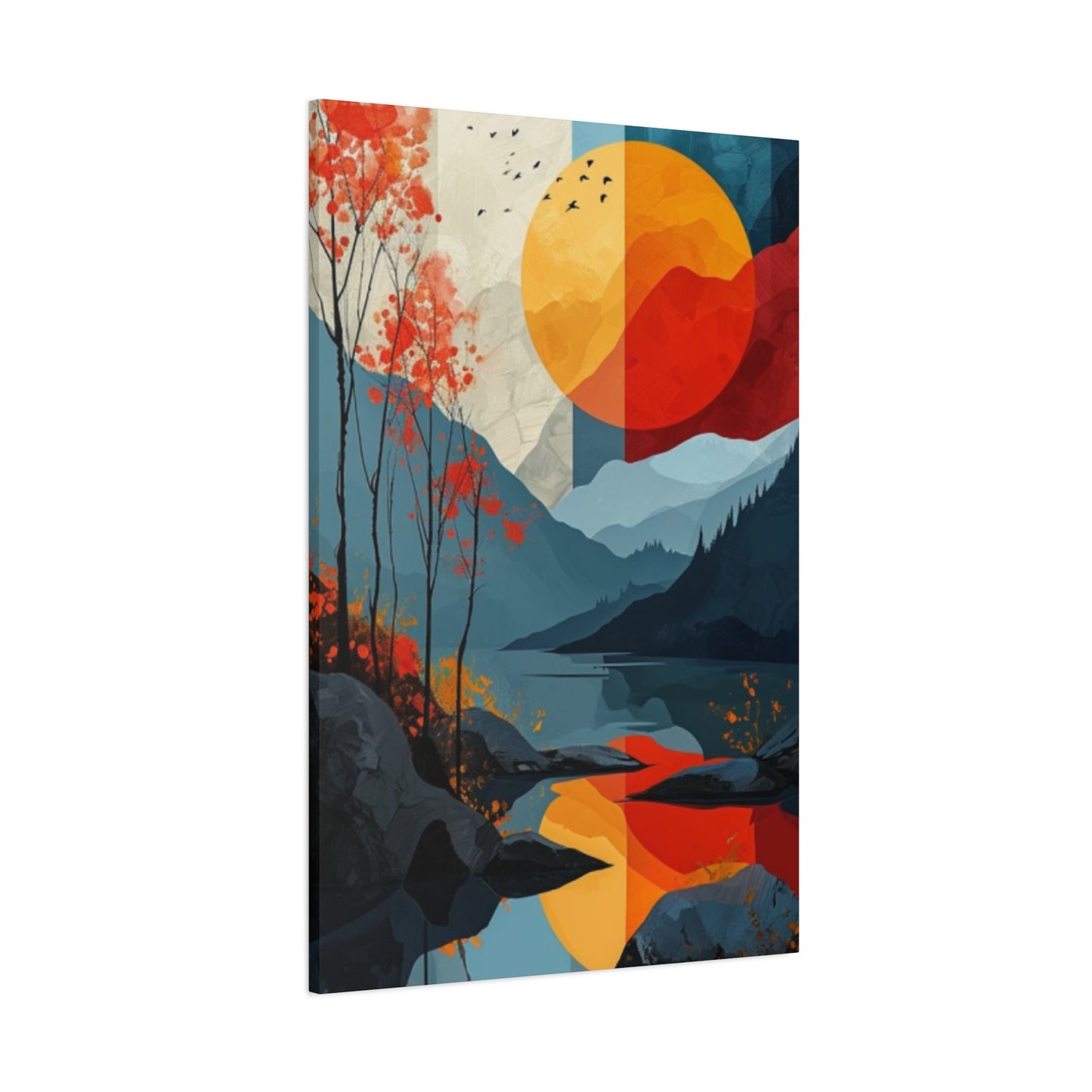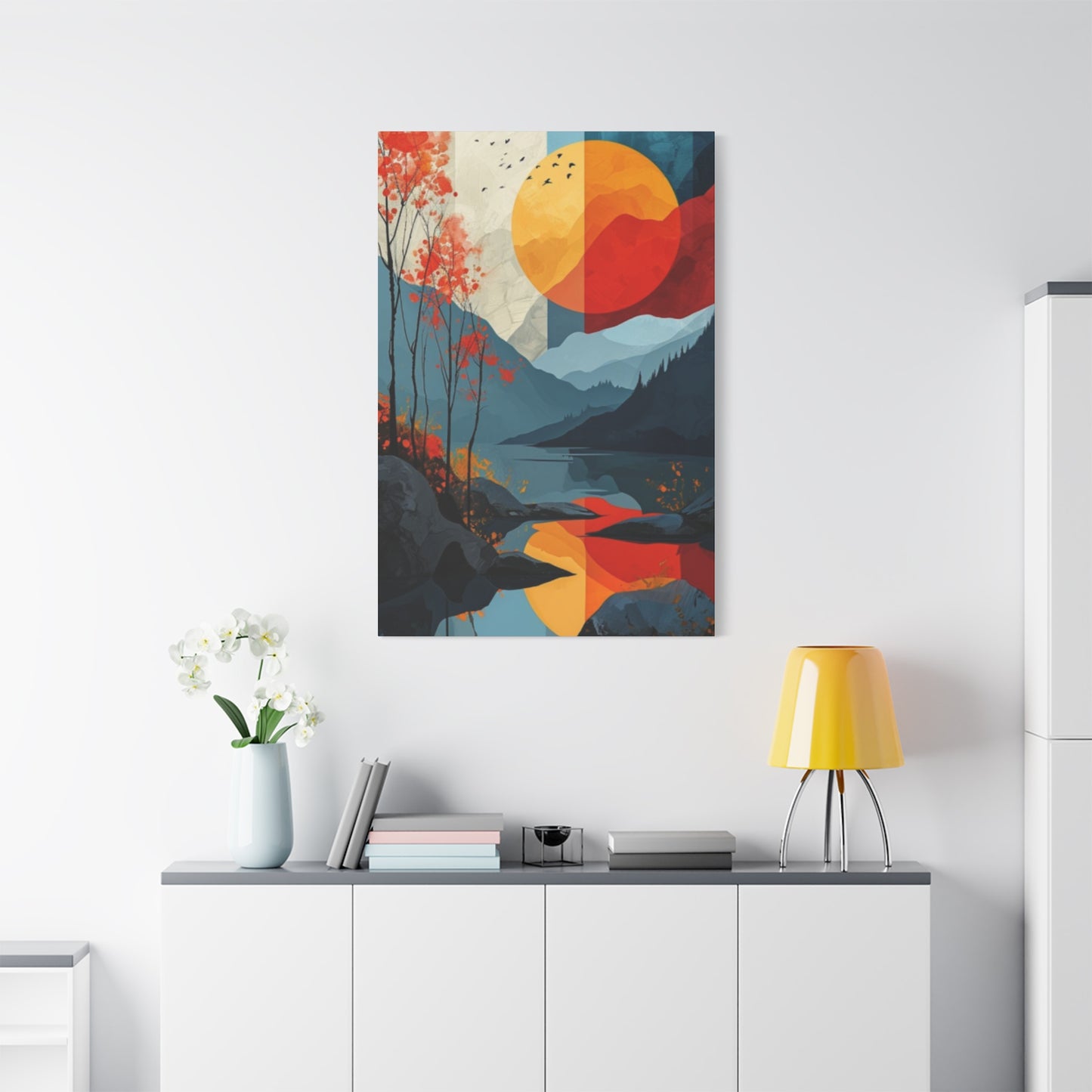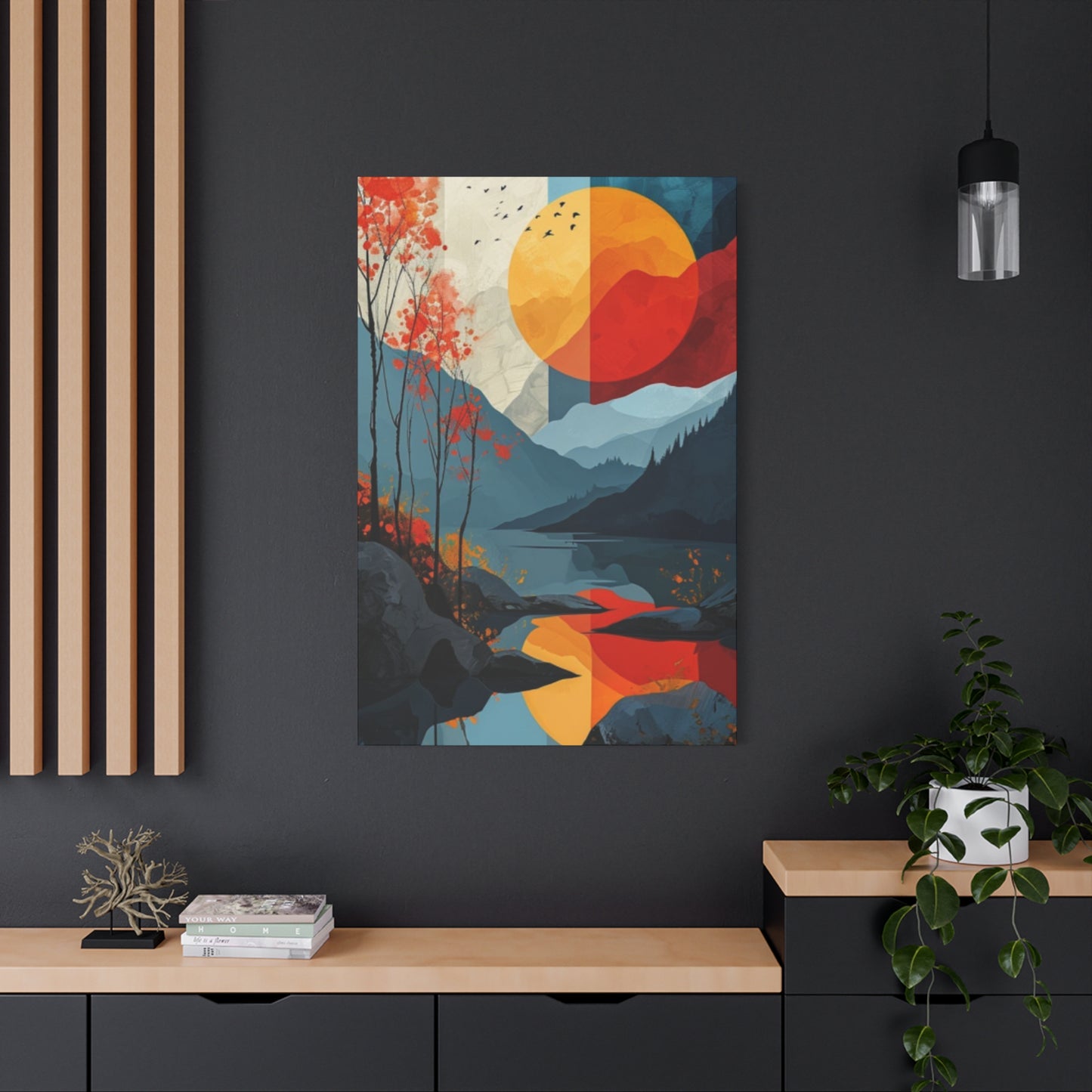Modernism Landscape Architecture Wall Art: Elevate Your Contemporary Design
The fusion of modernist design principles with landscape architecture has created one of the most compelling art movements of the contemporary era. Modernist landscape architecture wall art represents more than mere decoration; it embodies a philosophy that celebrates clean lines, geometric precision, and the harmonious integration of built and natural environments. This artistic expression has revolutionized how we perceive and interact with both interior spaces and the outdoor world beyond our walls.
The Evolution of Modernist Landscape Architecture in Visual Arts
Modernist landscape architecture wall art emerged from the broader modernist movement that swept through the early 20th century. This artistic revolution challenged traditional notions of beauty and functionality, emphasizing simplicity, geometric forms, and the elimination of unnecessary ornamentation. The movement found its way into landscape architecture through pioneers who recognized that outdoor spaces could be designed with the same precision and intentionality as buildings.
The visual representation of these modernist landscape principles on canvas and in wall art has become increasingly popular as homeowners and designers seek to bring the serenity and sophistication of modernist outdoor design into interior spaces. These artworks capture the essence of carefully planned gardens, precisely arranged outdoor furniture, and the interplay between natural and constructed elements that define modernist landscape architecture.
Artists working in this genre draw inspiration from iconic modernist landscape architects who transformed how we think about outdoor spaces. Their work emphasizes the beauty found in restraint, the power of negative space, and the elegance of simple geometric forms when applied to natural settings. This artistic approach translates beautifully to wall art, where viewers can appreciate the careful balance between order and organic growth that characterizes the best modernist landscape designs.
The appeal of modernist landscape architecture wall art lies in its ability to evoke the feeling of being in a thoughtfully designed outdoor space while remaining indoors. These pieces often feature sweeping lawns punctuated by carefully placed sculptural elements, geometric water features that create focal points within larger compositions, and the strategic use of plants as architectural elements rather than mere decoration.
Contemporary artists continue to explore and expand upon these themes, creating works that speak to our modern desire for spaces that feel both sophisticated and connected to nature. The clean lines and uncluttered compositions typical of this art form reflect our contemporary lifestyle preferences while honoring the rich tradition of modernist design philosophy.
Geometric Garden Designs on Canvas Prints
Geometric garden designs translated to canvas prints represent one of the most striking expressions of modernist landscape architecture in visual art. These works take the mathematical precision and spatial relationships found in modernist gardens and present them as compelling visual compositions that can transform any interior space. The geometric approach to garden design emphasizes patterns, repetition, and the careful arrangement of elements to create harmony and visual interest.
Canvas prints featuring geometric garden designs often showcase the beauty of formal garden layouts where every element has been placed with intentional precision. These designs might feature perfectly aligned pathways, symmetrically arranged planting beds, and water features that follow geometric patterns. The translation of these three-dimensional spaces into two-dimensional art requires a deep understanding of both design principles and artistic composition.
The color palettes used in geometric garden canvas prints tend toward the subdued and sophisticated, reflecting the modernist preference for restraint and elegance. Greens are often muted and varied, creating subtle tonal variations that suggest the diversity of plant materials while maintaining visual cohesion. These works frequently incorporate neutral tones that serve as backgrounds for more vibrant accents, much like how modernist gardens use expanses of lawn or paving as canvases for carefully placed colorful elements.
The compositional structure of geometric garden canvas prints draws viewers into the depicted space through the use of perspective and leading lines. Pathways become compositional elements that guide the eye through the artwork, while geometric planting beds create rhythms and patterns that hold visual interest. The careful balance between positive and negative space in these works reflects the modernist principle that what is left out is often as important as what is included.
Artists creating geometric garden canvas prints must consider how to convey the experiential quality of moving through a designed landscape while working within the constraints of a static medium. They achieve this through the use of multiple viewpoints, the suggestion of depth through overlapping elements, and the careful modulation of detail from foreground to background. These techniques help create the impression that viewers could step into the depicted garden and explore its geometric pathways.
The popularity of geometric garden canvas prints reflects our contemporary appreciation for order and clarity in design. These works appeal to viewers who value the aesthetic qualities of well-organized spaces and find beauty in the intersection of mathematical precision with natural elements. They serve as daily reminders of the possibility of creating harmony between human design intentions and the organic world.
Modern printing technologies have made it possible to reproduce the subtle tonal variations and precise lines that characterize geometric garden designs with remarkable fidelity. High-quality canvas prints can capture the nuanced color relationships and detailed linework that make these designs so compelling, allowing homeowners to enjoy museum-quality reproductions of geometric garden art in their own spaces.
The versatility of geometric garden canvas prints makes them suitable for a wide range of interior design contexts. Their clean lines and sophisticated color palettes complement modern and contemporary interiors, while their connection to nature makes them appropriate for spaces that seek to blur the boundaries between indoor and outdoor living. These works can serve as focal points in minimalist interiors or as complementary elements in more complex design schemes.
Abstract Modernism in Landscape Wall Décor
Abstract modernism in landscape wall décor represents a sophisticated evolution of traditional landscape representation, where artists distill the essential qualities of outdoor spaces into pure visual elements. This approach moves beyond literal representation to capture the emotional and sensory experiences associated with modernist landscape architecture through color, form, and composition alone.
The abstract approach to modernist landscape wall décor allows artists to explore the fundamental relationships that make modernist outdoor spaces so compelling without being constrained by realistic representation. These works might extract the linear qualities of a modernist garden's pathways and translate them into bold graphic elements, or they might capture the color relationships found in a carefully planned planting scheme and present them as abstract color fields.
Color plays a particularly important role in abstract modernist landscape wall décor. Artists working in this style often employ color palettes that evoke specific outdoor experiences while maintaining the sophisticated restraint characteristic of modernist design. Cool blues and grays might suggest the presence of water features or stone elements, while various greens create associations with carefully maintained lawns and precisely pruned plantings.
The compositional strategies used in abstract modernist landscape wall décor often mirror the spatial organization principles found in modernist gardens. Elements are arranged with careful attention to balance and proportion, creating visual relationships that echo the way modernist landscape architects organize outdoor spaces. Negative space is used strategically to suggest the open areas that are so important in modernist garden design.
Texture plays a crucial role in these abstract works, with artists using various techniques to suggest the different materials and surfaces found in modernist landscapes. Smooth areas might evoke paved surfaces or still water, while rougher textures could suggest natural stone or planted areas. The interplay of different textures within a single composition helps create visual interest while maintaining the overall sense of cohesion that characterizes good modernist design.
The scale relationships within abstract modernist landscape wall décor often reflect the way modernist gardens use elements of different sizes to create visual hierarchy and guide movement through space. Large, simple forms might represent major landscape features like lawns or water bodies, while smaller, more detailed elements could suggest the kind of carefully chosen accent plants or sculptural elements that modernist gardens often feature.
Abstract modernist landscape wall décor appeals to viewers who appreciate the emotional and psychological effects of well-designed outdoor spaces without requiring literal representation of those spaces. These works can evoke the sense of calm and order that comes from spending time in thoughtfully designed gardens while functioning as sophisticated design elements in their own right.
The interpretive nature of abstract modernist landscape wall décor makes these works particularly engaging for viewers, who can bring their own experiences and associations to their understanding of the pieces. This quality makes the art more personal and allows it to evolve in meaning over time as viewers' relationships with the work deepen.
Contemporary artists working in abstract modernist landscape wall décor often draw inspiration from specific modernist garden projects while translating their essential qualities into purely visual terms. This approach allows them to honor the legacy of important landscape architects while creating entirely new artistic expressions that stand on their own merits.
Mid-Century Modern Landscape Wall Art
Mid-century modern landscape wall art captures the distinctive aesthetic and philosophical approach to outdoor design that emerged during the post-war period of the 1940s through 1970s. This era produced some of the most influential landscape architecture projects, and the visual art inspired by these designs reflects the optimism, innovation, and sophisticated simplicity that characterized the period.
The mid-century modern approach to landscape design emphasized the integration of indoor and outdoor living, a concept that translates beautifully to wall art that can help blur the boundaries between interior spaces and the natural world beyond. These artworks often feature the characteristic elements of mid-century landscape design, including expansive lawns, geometric swimming pools, and the strategic use of native plants arranged in naturalistic but clearly designed compositions.
Color palettes in mid-century modern landscape wall art tend to reflect the era's preference for both bold accent colors and sophisticated neutrals. Turquoise swimming pools, vibrant orange outdoor furniture, and the warm tones of natural wood create striking contrasts against backgrounds of sage green foliage and warm gray hardscaping materials. These color relationships capture the era's confidence and optimism while maintaining the sophisticated restraint that characterizes the best mid-century design.
The architectural elements that were central to mid-century landscape design appear frequently in wall art from this genre. Clean-lined pergolas, geometric planters, and the characteristic flat-roofed structures that defined mid-century homes become compositional elements that help organize and structure the artistic compositions. These architectural features are often rendered with the same attention to proportion and detail that made the original designs so compelling.
Mid-century modern landscape wall art often captures the era's fascination with new materials and construction techniques. The use of concrete, steel, and glass in landscape applications created new aesthetic possibilities that artists continue to explore in their work. The interplay between these modern materials and natural elements like stone and wood creates visual tensions that make for compelling artistic subjects.
The social aspects of mid-century outdoor living are often reflected in landscape wall art from this period. Outdoor entertaining areas, built-in barbecue facilities, and the seamless flow between indoor and outdoor spaces speak to the era's emphasis on casual, modern lifestyle. These elements help create artworks that feel inhabited and inviting, suggesting the human activities that these spaces were designed to accommodate.
The influence of important mid-century landscape architects is evident in contemporary wall art that draws inspiration from their work. The bold geometric forms, innovative use of materials, and integration with modernist architecture that characterized their projects continue to inspire artists who translate these three-dimensional design achievements into compelling two-dimensional compositions.
Mid-century modern landscape wall art often incorporates the era's graphic design sensibilities, with clean typography, bold geometric patterns, and the kind of sophisticated color relationships that appeared in everything from advertising to textile design during the period. This cross-pollination between different design disciplines helps create artworks that capture the comprehensive aesthetic vision that characterized mid-century modernism.
The nostalgic appeal of mid-century modern landscape wall art reflects our contemporary appreciation for the era's optimistic vision of modern living. These works allow viewers to connect with a time when technology and design were seen as forces that could improve daily life and create more beautiful, functional environments for everyone.
Contemporary interpretations of mid-century modern landscape wall art often update the era's themes for current sensibilities while maintaining the essential characteristics that make this style so enduringly appealing. Artists might incorporate contemporary environmental concerns or updated material palettes while preserving the clean lines, sophisticated color relationships, and integration of architecture and landscape that defined the original movement.
Minimalist Outdoor-Inspired Canvas Prints
Minimalist outdoor-inspired canvas prints represent the distillation of landscape experience into its most essential visual elements. This artistic approach reflects the broader minimalist movement's emphasis on reduction, clarity, and the elimination of non-essential elements while maintaining maximum emotional and aesthetic impact. When applied to outdoor-inspired themes, minimalism creates artworks that capture the essence of natural experiences without unnecessary detail or ornamentation.
The power of minimalist outdoor-inspired canvas prints lies in their ability to suggest vast outdoor spaces through the simplest possible means. A single horizontal line might evoke an endless horizon, while a few vertical elements could suggest trees or architectural features within a larger landscape composition. This reductive approach requires viewers to participate actively in creating meaning, drawing on their own experiences of outdoor spaces to complete the artistic statement.
Color relationships in minimalist outdoor-inspired canvas prints are typically very restrained, often working within monochromatic or closely related color schemes. These limited palettes create works that feel sophisticated and timeless while allowing subtle variations in tone and intensity to carry significant compositional weight. A slightly warmer white against a cooler white background can suggest sunlight and shadow, while different values of gray can create the impression of depth and atmospheric perspective.
The compositional strategies used in minimalist outdoor-inspired canvas prints often mirror the way we actually experience large outdoor spaces. Rather than trying to capture every detail, these works focus on the overall relationships and proportions that make outdoor experiences memorable. The vast scale of sky relative to land, the way distant elements become simplified into basic shapes, and the importance of negative space in creating feelings of openness and freedom are all translated into minimal visual terms.
Texture plays a subtle but important role in minimalist outdoor-inspired canvas prints. Even within very simple compositions, variations in surface quality can suggest different materials and atmospheric conditions without requiring detailed representation. The texture of canvas itself becomes an important element, with some areas left smooth while others might be built up to suggest different surfaces or lighting conditions.
The scale relationships within minimalist outdoor-inspired canvas prints often reflect the human experience of being within vast outdoor spaces. Small elements gain significance through their placement and proportion relative to larger, simpler forms. This approach mirrors the way a single tree can become monumentally important within a large open landscape, or how architectural elements can serve as crucial reference points within expansive outdoor compositions.
Minimalist outdoor-inspired canvas prints appeal to viewers who value contemplation and find beauty in simplicity. These works create opportunities for quiet reflection and can help establish calm, meditative atmospheres within interior spaces. Their lack of visual complexity makes them suitable for spaces where other elements provide richness and detail, while their connection to outdoor experiences helps maintain a sense of connection to nature even in urban environments.
The printing process for minimalist outdoor-inspired canvas prints requires exceptional attention to subtle tonal variations and surface qualities that might be lost in less careful reproductions. High-quality printing can capture the nuanced color relationships and textural subtleties that make these apparently simple works so compelling upon closer examination.
The versatility of minimalist outdoor-inspired canvas prints makes them appropriate for a wide range of interior design contexts. Their neutral palettes and simple compositions allow them to complement existing design elements while providing visual relief from more complex or busy surroundings. They can serve as breathing space within visually dense environments or as subtle focal points within already minimal interior schemes.
Contemporary artists creating minimalist outdoor-inspired canvas prints often draw inspiration from specific landscape experiences while reducing them to their most essential visual qualities. This process requires a deep understanding of what makes outdoor experiences meaningful and the ability to translate those qualities into purely visual terms that will resonate with viewers who may not have shared the original experience.
Modern Architecture Meets Nature Wall Art
Modern architecture meets nature wall art explores the compelling intersection between built and natural environments that has been a central theme in progressive design for over a century. These artworks capture the moments where human construction and natural systems create new hybrid conditions that are neither purely architectural nor purely natural, but something entirely new and often more beautiful than either could achieve alone.
The philosophical underpinnings of modern architecture's relationship with nature provide rich subject matter for artists working in this genre. The modernist belief that buildings should respond to their natural settings, that interior and exterior spaces should flow seamlessly together, and that natural materials and forms should inform architectural expression all translate into compelling visual themes that artists continue to explore and reinterpret.
Glass walls that frame landscape views become compositional devices in modern architecture meets nature wall art, creating artworks that play with the boundaries between indoor and outdoor space. These transparent barriers simultaneously separate and connect, allowing visual continuity while acknowledging the practical needs of shelter and climate control. Artists explore these paradoxes through careful attention to reflection, transparency, and the way architectural framing devices can enhance our perception of natural beauty.
The integration of water features into modern architectural projects provides another rich source of inspiration for artists working in this genre. Reflecting pools that mirror building facades, water walls that create cooling microclimates, and swimming pools that appear to merge with distant horizons all represent successful marriages of architectural intention and natural phenomena that translate beautifully into two-dimensional artistic compositions.
Plant materials used as architectural elements rather than mere decoration represent a sophisticated approach to integrating nature into built environments that appears frequently in modern architecture meets nature wall art. Living walls, rooftop gardens, and carefully planned landscape features that serve structural or environmental functions as well as aesthetic ones demonstrate the possibilities for genuine collaboration between natural and built systems.
The play of light and shadow that occurs when modern buildings interact with natural elements creates constantly changing compositions that artists capture and interpret in their work. The way sunlight filters through architectural screens to create patterns on planted surfaces, or how building overhangs create microclimates that support different types of vegetation, illustrates the dynamic nature of the relationship between architecture and nature.
Materials that blur the boundaries between natural and constructed elements appear frequently in modern architecture meets nature wall art. Stone that has been precisely cut and fitted but maintains its natural texture, wood that has been carefully detailed but preserves its organic character, and concrete that has been textured to evoke natural rock formations all represent successful strategies for creating harmony between built and natural elements.
The environmental performance of modern buildings designed to work with natural systems provides conceptual framework for artists exploring these themes. Buildings that use natural ventilation, passive solar heating and cooling, and integrated storm water management represent a more mature relationship between architecture and nature that goes beyond mere aesthetic consideration to encompass functional integration.
The social dimensions of spaces where modern architecture meets nature also influence artistic interpretations of these themes. Outdoor rooms created by architectural elements, gardens that serve as extensions of interior spaces, and the way buildings can frame and enhance social activities in natural settings all provide rich subject matter for artists interested in the human experience of these hybrid environments.
Contemporary challenges such as climate change and urbanization have given new urgency to the relationship between modern architecture and nature, themes that appear in current wall art exploring these subjects. Artists are increasingly interested in how architectural strategies can support biodiversity, manage environmental challenges, and create resilient communities that work with natural systems rather than against them.
The global nature of contemporary architecture has exposed artists to a wider range of strategies for integrating buildings with natural environments. Traditional approaches from different cultures, combined with new technologies and materials, create possibilities for innovative relationships between architecture and nature that continue to inspire new artistic explorations.
Clean Lines in Landscape Canvas Décor
Clean lines in landscape canvas décor represent the aesthetic philosophy that simplicity and precision can enhance rather than compete with natural beauty. This approach to landscape representation emphasizes the power of reduction, the importance of clear visual organization, and the way careful editing can intensify the emotional impact of outdoor spaces rather than diminishing it through unnecessary complexity.
The concept of clean lines in landscape design translates to canvas décor through careful attention to compositional structure and the elimination of extraneous visual elements. Artists working in this style create images that feel uncluttered and purposeful, where every element serves a specific visual function and contributes to the overall sense of harmony and balance that characterizes well-designed outdoor spaces.
Linear elements in clean-lined landscape canvas décor often serve multiple functions within the composition. Pathways become leading lines that guide viewer attention through the artwork while also suggesting movement and exploration within the depicted space. Edge conditions between different landscape areas become compositional devices that help organize the visual field while also suggesting the careful planning that characterizes thoughtfully designed outdoor environments.
The treatment of plant materials in clean lines landscape canvas décor tends toward simplification and geometric organization rather than naturalistic representation. Trees might be rendered as simple vertical elements that provide structure and rhythm within the composition, while planting beds become areas of unified color or texture that serve compositional rather than botanical functions. This approach captures the way landscape architects use plants as design materials rather than simply horticultural specimens.
Color palettes in clean lines landscape canvas décor typically emphasize harmony and restraint over diversity and complexity. Limited color schemes create visual unity while allowing subtle variations in tone and intensity to carry significant compositional weight. The sophisticated use of neutral tones provides backgrounds against which carefully chosen accent colors can achieve maximum impact with minimal means.
The relationship between positive and negative space receives particular attention in clean lines landscape canvas décor. Open areas are treated as active compositional elements rather than simply backgrounds for more detailed features. This approach reflects the way successful landscape design uses open space to create feelings of calm and spaciousness while also providing visual relief from more intensively developed areas.
Geometric organization principles that guide clean-lined landscape design appear clearly in canvas décor inspired by these spaces. Rectangular lawn areas, circular planting beds, and linear water features become compositional elements that help create visual order while also suggesting the careful planning that underlies successful landscape projects.
The influence of architectural thinking on landscape design becomes apparent in clean lines landscape canvas décor through attention to proportion, scale, and the relationship between different design elements. The same principles that guide the design of buildings can be applied to outdoor spaces, creating environments that feel purposeful and well-organized while still connecting occupants to natural processes and seasonal changes.
The seasonal variation that occurs in real landscapes presents interesting challenges for artists creating clean lines landscape canvas décor. The basic compositional structure must be strong enough to remain compelling regardless of seasonal changes in color and texture, while also allowing for the kind of variation that makes outdoor spaces interesting over time.
Contemporary interpretations of clean lines in landscape canvas décor often incorporate current environmental concerns and sustainable design practices while maintaining the aesthetic principles that make this approach so enduringly appealing. Artists might explore themes related to water conservation, native plant communities, or low-maintenance landscape strategies while preserving the visual clarity and sophistication that characterizes clean-lined design.
The psychological effects of clean-lined landscape environments provide additional layers of meaning for artists working in this genre. The sense of calm and order that comes from being in well-organized outdoor spaces can be evoked through careful attention to visual organization and the elimination of visual chaos or unnecessary complexity in artistic compositions.
Contemporary Park Design Wall Prints
Contemporary park design wall prints capture the evolution of public outdoor space design in response to changing urban conditions, environmental challenges, and community needs. These artworks reflect the innovative approaches that landscape architects and urban designers are taking to create public spaces that serve diverse populations while addressing contemporary issues such as climate change, social equity, and urban density.
The multi-functional nature of contemporary park design provides rich subject matter for artists creating wall prints inspired by these spaces. Modern parks often serve simultaneously as recreation areas, storm water management systems, urban heat island mitigation strategies, and community gathering spaces. Artists explore these overlapping functions through compositions that suggest the complexity and sophistication of contemporary park planning while maintaining visual clarity and aesthetic appeal.
Environmental sustainability themes appear frequently in contemporary park design wall prints, reflecting the increasing importance of ecological function in public space design. Rain gardens, constructed wetlands, native plant communities, and renewable energy installations become both functional landscape elements and compelling visual subjects that help educate viewers about innovative approaches to environmental stewardship in urban contexts.
The social dimensions of contemporary park design influence artistic interpretations of these spaces through attention to accessibility, community programming, and the way public spaces can support diverse user groups and activities. Wall prints might capture the energy of community events, the quiet contemplation possible in well-designed green spaces, or the way thoughtful design can create opportunities for both solitude and social interaction within the same environment.
Technology integration in contemporary parks provides new visual themes for artists to explore. Interactive installations, digital information systems, and smart infrastructure that responds to environmental conditions or user needs represent the cutting edge of park design and create opportunities for artistic exploration of how technology can enhance rather than detract from natural experiences.
The global nature of contemporary park design exposes artists to innovative approaches from different cultures and climatic conditions. Techniques for creating productive landscapes in urban contexts, strategies for managing extreme weather events, and approaches to community engagement in park planning all provide inspiration for artists interested in the international evolution of public space design.
Adaptive reuse of industrial and infrastructure sites for park development represents a significant trend in contemporary park design that translates well to artistic interpretation. The transformation of abandoned railways into linear parks, the conversion of former industrial sites into community green spaces, and the integration of functional infrastructure into recreational landscapes all provide compelling before-and-after narratives that artists can explore in their work.
The increasing density of urban environments has led to innovative approaches to park design that maximize the benefits of limited space, themes that appear in contemporary park design wall prints. Vertical gardens, multi-level park designs, and the integration of park functions into building design all represent creative responses to land constraints that create interesting artistic subjects.
Climate adaptation strategies in contemporary park design provide urgent and relevant themes for artistic exploration. Parks designed to manage increased precipitation, provide cooling during heat waves, and support wildlife migration in fragmented urban landscapes represent forward-thinking approaches to public space design that artists can help communicate to broader audiences.
The community engagement processes that inform contemporary park design sometimes become subjects for artistic interpretation themselves. The way public input shapes park development, the importance of community ownership in successful public spaces, and the role of parks in building social cohesion all provide conceptual frameworks for artists working in this genre.
The economic impacts of well-designed contemporary parks, including property value increases, business district revitalization, and tourism development, provide additional layers of meaning for artists exploring these themes. Parks as catalysts for broader urban development and community improvement represent the expanding role of landscape architecture in urban planning and economic development strategies.
Health and wellness considerations in contemporary park design influence artistic interpretations through attention to exercise opportunities, air quality improvement, stress reduction, and community health outcomes. Wall prints might explore how thoughtful park design can contribute to public health goals while creating beautiful and engaging outdoor environments.
Modernist Botanical Wall Art & Canvas
Modernist botanical wall art and canvas represents a sophisticated evolution of traditional botanical illustration, where scientific accuracy and decorative beauty are joined by the aesthetic principles of modernist design. This genre combines careful observation of plant forms and growth patterns with the clean lines, geometric organization, and restrained color palettes that characterize modernist visual culture.
The modernist approach to botanical representation emphasizes the architectural qualities inherent in plant structures rather than focusing solely on their naturalistic appearance or scientific detail. Artists working in this style might explore the geometric patterns found in leaf arrangements, the linear qualities of plant stems and branches, or the way repetitive elements in plant growth create natural rhythms that echo modernist design principles.
Color treatment in modernist botanical wall art and canvas often involves the simplification and systematization of natural color relationships. Rather than attempting to capture the full complexity of natural coloration, artists might work within limited palettes that emphasize the essential character of different plant types while maintaining the visual coherence that characterizes successful modernist design.
The compositional strategies used in modernist botanical wall art often reflect architectural thinking applied to plant materials. Plants are arranged and presented as design elements rather than naturalistic specimens, with attention to balance, proportion, and the relationship between different forms taking precedence over botanical accuracy or decorative appeal.
The influence of modernist garden design on botanical wall art creates opportunities for artists to explore how plant materials function as architectural elements within designed landscapes. Hedges become linear compositional devices, specimen trees serve as sculptural focal points, and ground cover plantings create textural fields that serve compositional rather than purely horticultural functions.
Scale relationships in modernist botanical wall art often play with viewers' expectations about plant representation. Individual plant elements might be enlarged to monumental proportions, emphasizing their architectural qualities, while complex plant communities might be simplified into basic geometric relationships that capture their essential character without unnecessary detail.
The seasonal variation that characterizes plant materials provides opportunities for artists working in modernist botanical themes to explore change over time while maintaining consistent aesthetic principles. The same plant might be represented in different seasonal states, showing how modernist design principles can accommodate natural variation while preserving visual coherence.
Contemporary environmental concerns influence modernist botanical wall art through attention to native plant communities, sustainable gardening practices, and the role of plants in addressing climate change and biodiversity loss. Artists might explore these themes while maintaining the aesthetic restraint and visual clarity that characterizes modernist approach to design.
The scientific understanding of plant ecology and environmental relationships provides conceptual frameworks for artists creating modernist botanical wall art. The way plants interact with their environments, support other species, and contribute to ecological health can be translated into visual compositions that maintain modernist aesthetic principles while educating viewers about environmental relationships.
The global nature of contemporary horticulture exposes artists to plant materials from different climatic zones and cultural contexts, providing opportunities to explore how modernist design principles can be applied to diverse botanical subjects. The adaptation of plants to different growing conditions and their integration into designed landscapes in various cultural contexts provide rich subject matter for artistic exploration.
The relationship between indoor and outdoor plant cultivation, characteristic of modernist architecture's emphasis on connecting interior and exterior spaces, influences botanical wall art through attention to houseplants, indoor gardens, and the way plants can serve as living architectural elements within buildings.
Technology applications in contemporary horticulture, including hydroponic growing systems, automated irrigation, and environmental monitoring, provide opportunities for artists to explore how modernist aesthetic principles can be applied to cutting-edge approaches to plant cultivation and landscape management.
Landscape Geometry in Modern Wall Art
Landscape geometry in modern wall art explores the mathematical relationships and spatial organizations that underlie successful landscape design, translating three-dimensional design principles into compelling two-dimensional compositions. This artistic approach recognizes that the most powerful landscape experiences often result from careful attention to proportion, rhythm, and the geometric relationships between different design elements.
The golden ratio and other classical proportional systems appear frequently in landscape geometry wall art, reflecting the way these mathematical relationships create naturally pleasing compositions whether applied to architectural projects or landscape design. Artists explore how these timeless proportional systems can be used to organize outdoor spaces and create visual harmony between different landscape elements.
Grid systems that guide landscape planning become compositional devices in geometric landscape wall art. The regular spacing of trees, the modular organization of planting beds, and the systematic arrangement of hardscape elements all reflect the way geometric thinking can bring order and clarity to complex outdoor environments while still allowing for natural variation and seasonal change.
Radial compositions that organize landscape elements around central focal points provide another geometric strategy that translates well to wall art interpretation. Circular planting arrangements, radiating pathway systems, and the way landscape views can be organized around central features all demonstrate geometric principles that create both visual interest and functional organization in outdoor spaces.
Linear systems that guide movement through landscape spaces appear as compositional elements in geometric landscape wall art. The way pathways connect different areas, how sight lines are organized to reveal landscape features in sequence, and the role of edges in defining and separating different landscape zones all represent geometric strategies that successful landscape designers use to create compelling outdoor experiences.
Symmetrical and asymmetrical balance principles from geometric design influence landscape wall art through attention to how visual weight is distributed within compositions. The way large specimen trees can balance areas of detailed planting, how open lawn spaces can provide visual rest from more intensively developed areas, and the role of architectural elements in creating visual anchors within landscape compositions all reflect geometric thinking applied to outdoor space organization.
Modular systems that allow landscape designs to be expanded or modified over time provide conceptual frameworks for artists exploring geometric approaches to landscape representation. The way successful landscape designs can accommodate growth and change while maintaining their essential geometric organization demonstrates the flexibility and adaptability of well-planned geometric systems.
The relationship between two-dimensional patterns and three-dimensional spatial experiences presents interesting challenges for artists creating geometric landscape wall art. Ground plane patterns that look compelling from above must also create interesting spatial experiences for people moving through them at eye level, requiring artists to consider multiple viewpoints and scales simultaneously.
Contemporary computational design tools that allow landscape architects to explore complex geometric relationships and test different organizational strategies influence modern approaches to geometric landscape wall art. Digital fabrication techniques and parametric design methods provide new possibilities for creating geometric landscape elements that would have been difficult or impossible to achieve with traditional construction methods.
The environmental performance of geometrically organized landscapes provides additional layers of meaning for artists exploring these themes. The way geometric arrangements can optimize irrigation efficiency, maximize sun exposure for plant growth, or create microclimates through careful attention to spacing and orientation all demonstrate that geometric beauty and environmental function can be mutually reinforcing.
Cultural differences in geometric landscape traditions provide rich source material for artists creating geometric landscape wall art. The geometric gardens of Islamic cultures, the formal garden traditions of European cultures, and contemporary interpretations of geometric landscape principles from different global contexts all provide inspiration for artistic exploration.
The psychological effects of geometric landscape organization, including the sense of order and calm that comes from well-organized outdoor spaces and the way geometric patterns can create feelings of security and comprehensibility within larger natural systems, influence artistic interpretations of these themes through attention to the emotional and experiential qualities of geometric landscape design.
Conclusion
Modernist landscape architecture wall art provides a sophisticated and contemporary way to elevate interior spaces, blending the precision of architectural design with the creativity and fluidity of modern artistry. By capturing the structural elegance of landscapes, geometric compositions, and spatial harmony, these artworks transform walls into focal points that reflect both aesthetic refinement and intellectual appreciation. Whether displayed in living rooms, offices, studios, or reception areas, modernist landscape wall art enhances interiors with balance, visual interest, and a sense of curated sophistication.
The appeal of this form of wall art lies in its ability to merge architectural precision with artistic expression. Artists interpret landscapes, gardens, urban planning, and topographical forms through minimalist lines, abstract perspectives, and controlled color palettes. Clean geometry, layered textures, and thoughtful spatial arrangements evoke a sense of order, tranquility, and modern elegance. Each piece captures the interplay between natural and constructed environments, offering viewers a contemplative experience that stimulates both aesthetic appreciation and creative thought.
Beyond visual beauty, modernist landscape architecture wall art carries symbolic and intellectual significance. The structured representation of landscapes and spaces reflects themes of harmony, balance, and human interaction with the environment. By integrating these pieces into interiors, individuals create spaces that inspire focus, reflection, and clarity, fostering environments that are not only visually striking but also intellectually engaging. Each artwork encourages exploration of spatial relationships, design principles, and the subtle artistry of landscape architecture.
From a design perspective, modernist landscape wall art is versatile and adaptable. Large-format canvases or framed prints make striking focal points in living rooms, offices, or galleries, while smaller works or coordinated series can accentuate hallways, bedrooms, or collaborative spaces. Neutral tones, bold contrasts, and minimalist forms allow these artworks to complement contemporary, industrial, minimalist, and eclectic interiors, providing cohesion, depth, and visual intrigue without overwhelming the space.
Ultimately, modernist landscape architecture wall art is more than decoration; it is a celebration of design, structure, and artistic interpretation. By thoughtfully incorporating these works into home or professional interiors, individuals can create environments that inspire creativity, elevate aesthetic appeal, and showcase a harmonious balance between human ingenuity and artistic vision. Each piece transforms walls into immersive, contemplative spaces that honor modernist principles while enriching the overall character and sophistication of any interior.

















